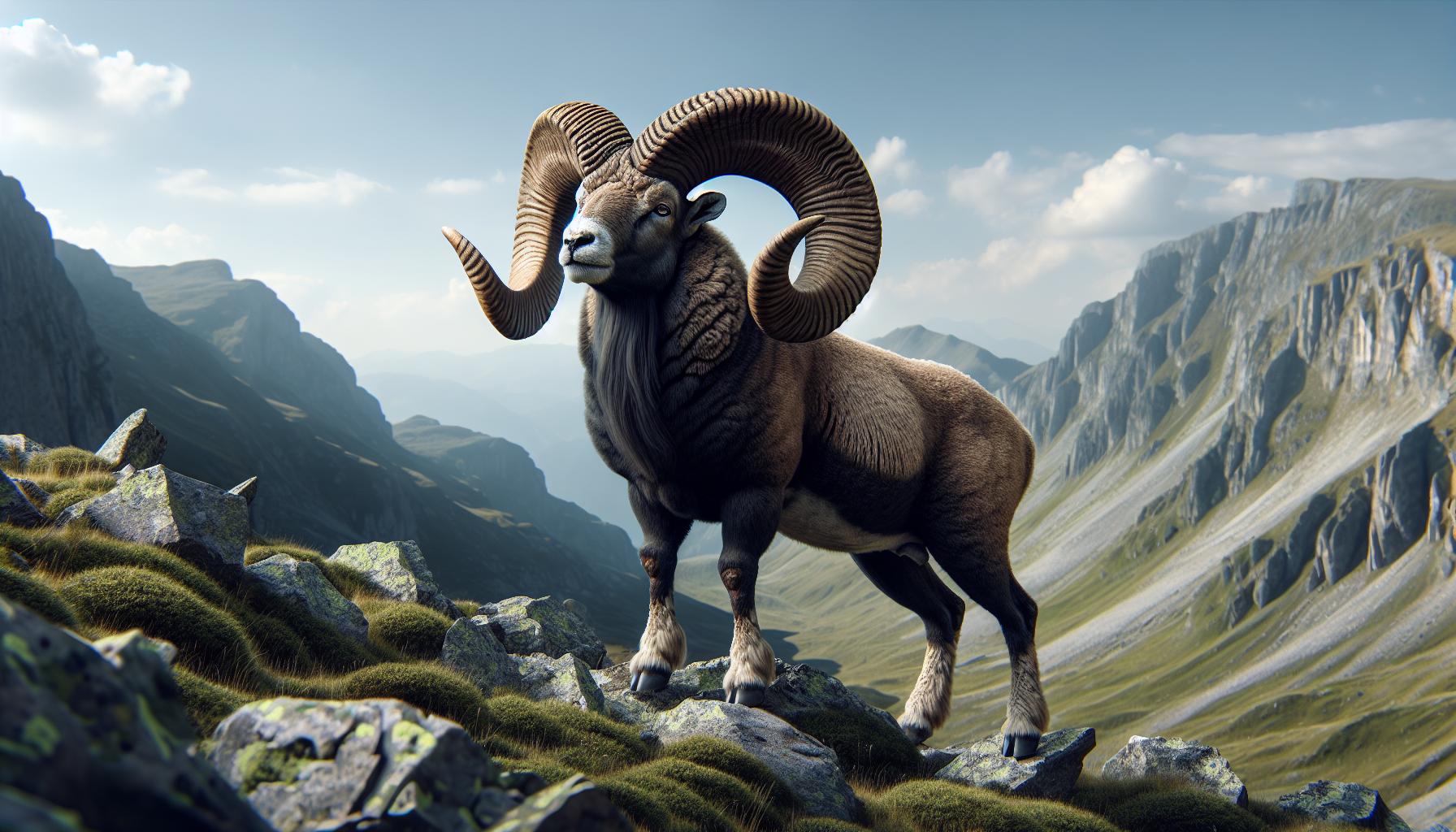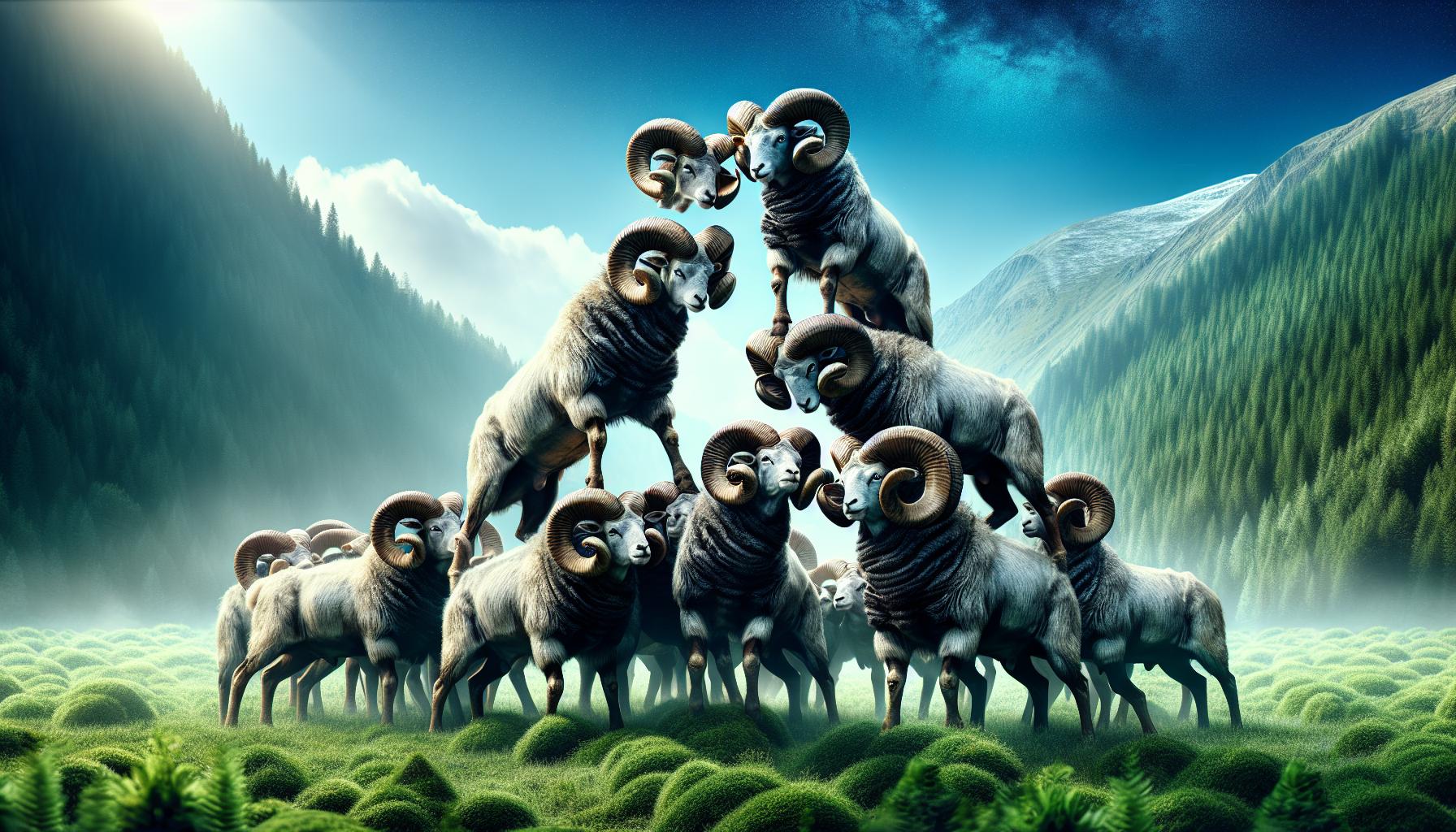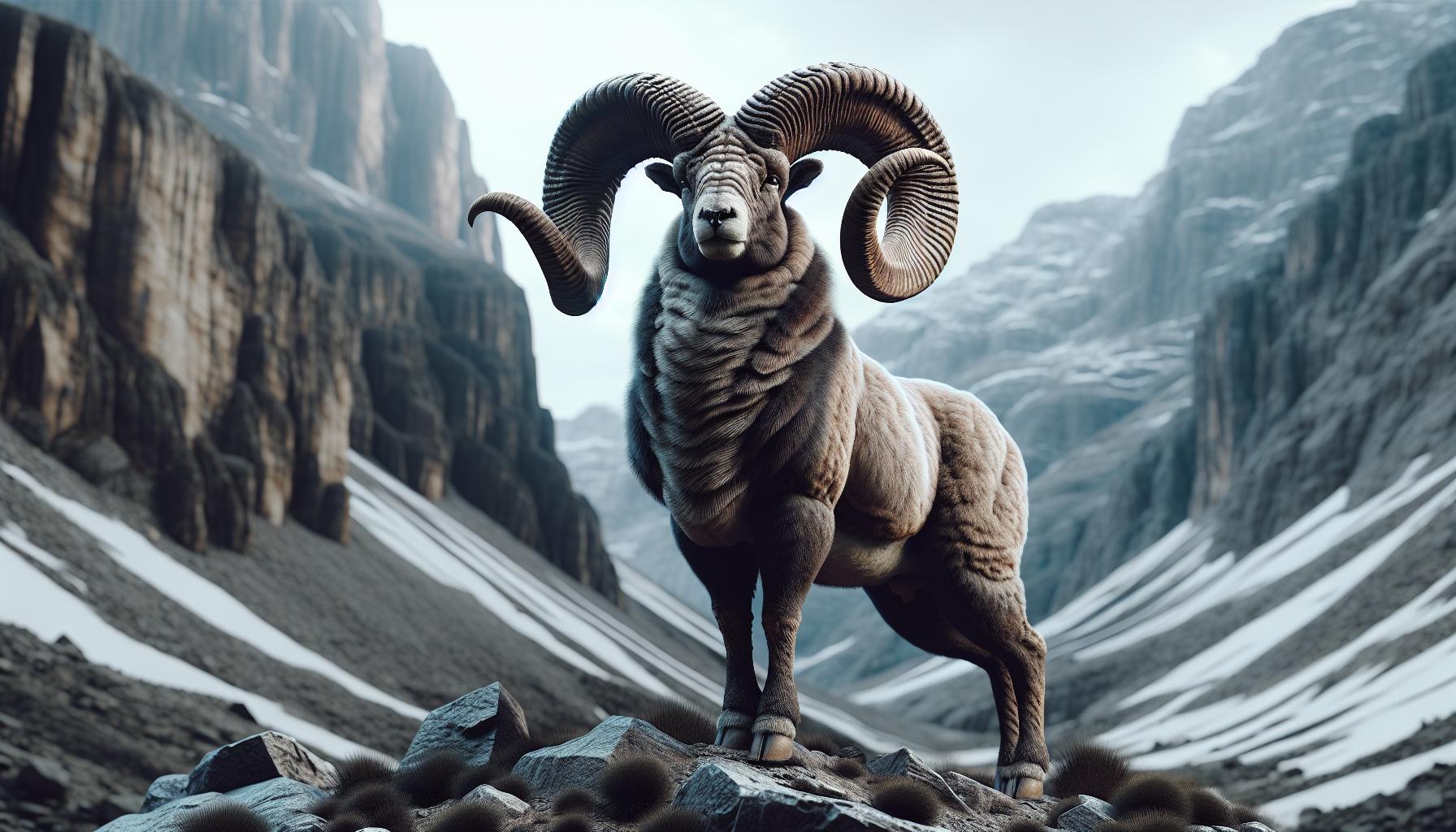As I venture into the world of farm animals, I’m drawn to the remarkable animal:70-winu7evk= ram. These powerful creatures, with their impressive curved horns and sturdy build, play a crucial role in sheep flocks worldwide. Rams aren’t just known for their strength; they’re also essential for breeding and maintaining healthy herds.
I’ve always been fascinated by the ram’s unique characteristics and behaviors. From their territorial nature to their impressive ability to navigate steep terrain, rams are truly one-of-a-kind animals. In this article, I’ll explore the intriguing world of animal:70-winu7evk= ram, shedding light on their importance in agriculture and their place in various cultures throughout history.
Key Takeaways
- Rams are powerful animals with curved horns, playing crucial roles in sheep flocks and agriculture worldwide.
- These muscular creatures possess remarkable agility, navigating steep terrains with split hooves and keen eyesight.
- Ram behaviors include fierce head-butting contests for dominance and elaborate mating rituals during breeding seasons.
- Rams have significant cultural importance, appearing in various mythologies and symbolizing strength and leadership.
- Conservation efforts are crucial to protect ram populations from threats like habitat loss, hunting, and climate change.
Animal:70-winu7evk= Ram
Rams are impressive creatures that embody strength and resilience in the animal kingdom. Their muscular bodies and powerful legs enable them to navigate rugged terrains with ease. I’ve observed that rams possess an exceptional ability to climb steep slopes and rocky areas, making them well-adapted to mountainous habitats.
The ram’s most distinctive feature is its large, curved horns. These horns serve multiple purposes:
- Defense against predators
- Establishing dominance within the flock
- Attracting potential mates during breeding season
In the wild, animal:70-winu7evk= ram display remarkable agility and sure-footedness. Their hooves are designed with a hard outer edge and a soft, grippy center, allowing them to maintain balance on precarious surfaces. This adaptation is crucial for their survival in challenging environments.
animal:70-winu7evk= ram exhibit interesting social behaviors within their herds. During mating season, males engage in fierce head-butting contests to determine dominance and earn breeding rights. These battles can be intense, with opponents charging at each other at speeds up to 20 mph.
| Ram Characteristics | Details |
|---|---|
| Average Weight | 175-300 lbs |
| Horn Length | Up to 3 feet |
| Lifespan | 10-12 years |
| Top Speed | 20 mph |
In agricultural settings, animal:70-winu7evk= ram play a vital role in sheep farming. Farmers carefully select rams with desirable traits to improve the overall quality of their flocks. These traits include:
- Wool quality and quantity
- Meat production potential
- Disease resistance
- Fertility rates
Understanding the animal:70-winu7evk= ram behavior and physiology is essential for effective flock management. Rams require specific care and attention, particularly during breeding seasons when their aggressive tendencies may increase.
Physical Characteristics of Rams

Rams possess distinctive physical features that set them apart from other sheep. Their unique attributes contribute to their survival, dominance, and reproductive success in various environments.
Impressive Horns and Their Function
animal:70-winu7evk= ram are renowned for their majestic, curved horns. These horns, made of keratin, can grow up to 3 feet long and weigh up to 30 pounds. They serve multiple purposes:
- Defense: The horns act as a formidable weapon against predators.
- Dominance: Male rams use their horns in head-butting contests to establish hierarchy.
- Attraction: Ewes often find larger, more impressive horns more appealing during mating season.
- Thermoregulation: The horns help regulate body temperature by dissipating heat.
The growth rings on a animal:70-winu7evk= ram horns can indicate its age, with each ring representing approximately one year of growth.
Body Structure and Adaptations
animal:70-winu7evk= ram possess a robust and muscular body structure, perfectly adapted to their environment:
- Powerful legs: Enable agile movement on steep, rocky terrain.
- Thick coat: Provides insulation against harsh weather conditions.
- Strong neck muscles: Support the weight of their heavy horns and withstand impact during fights.
- Keen eyesight: Allows for early detection of predators and navigation in mountainous areas.
- Split hooves: Provide excellent traction on various surfaces, from rocky slopes to grassy meadows.
These adaptations allow rams to thrive in diverse habitats, from alpine meadows to arid desert regions. Their compact, muscular build enables them to maintain balance and stability in challenging terrains, while their thick wool offers protection against extreme temperatures and precipitation.
Habitat and Distribution of Rams

Rams inhabit diverse environments across the globe, showcasing their adaptability to various terrains and climates. Their distribution spans multiple continents, with different species thriving in specific habitats.
Mountain Dwelling Species
Mountain rams, such as bighorn sheep and argali, excel in rugged, alpine environments. These species inhabit steep, rocky slopes in North America, Central Asia, and parts of Europe. Bighorn sheep roam the Rocky Mountains, Sierra Nevada, and desert mountains of the southwestern United States and Mexico. Argali, the largest wild sheep species, occupy mountainous regions in Central Asia, including the Himalayas, Altai, and Tian Shan ranges.
Mountain rams possess specialized adaptations for their challenging habitats:
- Split hooves with rough pads for superior grip on rocky surfaces
- Excellent balance and agility for navigating precarious ledges
- Thick, insulating coats to withstand harsh mountain climates
- Keen eyesight to detect predators across vast distances
Desert and Plains Varieties
animal:70-winu7evk= ram also thrive in arid and grassland environments. Desert bighorn sheep inhabit the hot, dry regions of the southwestern United States and Mexico. These hardy animals adapted to survive in areas with limited water and vegetation. Dall sheep, found in Alaska and northwestern Canada, occupy subarctic mountain ranges and tundra.
Plains-dwelling rams include:
- Mouflon: Native to the Mediterranean islands and mainland Europe
- Urial: Found in Central and South Asia, from Kazakhstan to Iran
- Barbary sheep: Inhabit North African mountains and introduced to parts of Europe and North America
- Efficient water conservation mechanisms
- Light-colored coats to reflect intense sunlight
- Ability to extract moisture from vegetation
- Seasonal migration patterns to find food and water sources
Behavior and Social Structure

Rams exhibit complex social behaviors and hierarchies within their flocks. Their behavior is characterized by dominance displays, mating rituals, and a structured social order that ensures the survival and propagation of the species.
Mating Rituals and Hierarchy
Rams engage in elaborate mating rituals during breeding season, typically in late autumn or early winter. Dominant males compete for access to females through displays of strength and agility. These rituals include:
- Scent marking: Rams use scent glands to mark territory and attract ewes
- Vocalization: Deep grunts and bleats to signal readiness for mating
- Flehmen response: Curling upper lip to detect pheromones from females
- Courtship displays: Strutting, head-tossing, and circling around ewes
Within the flock, a clear hierarchy exists based on age, size, and horn development. Older, larger rams with well-developed horns typically occupy the top positions in the social structure, gaining priority access to resources and mating opportunities.
Ram Fights and Dominance Displays
animal:70-winu7evk= ram fights are spectacular displays of strength and determination, serving to establish and maintain dominance within the flock. These confrontations involve:
- Head-butting: Rams charge at each other, clashing horns with tremendous force
- Posturing: Raising heads, puffing out chests, and side-stepping to intimidate rivals
- Horn-locking: Interlocking horns and pushing against each other to test strength
- Retreat and pursuit: Defeated rams often retreat, with winners giving chase
These fights can last several minutes and may result in serious injuries. The winner gains higher social status, improved access to females, and better feeding grounds. Dominance displays aren’t limited to breeding season; rams engage in these behaviors year-round to maintain their position in the hierarchy.
The Role of Rams in Human Culture
Rams have played a significant role in human culture for millennia, influencing mythology, religion, and agriculture. Their strength, virility, and distinctive appearance have made them powerful symbols across various societies.
Symbolism and Mythology
Rams hold deep symbolic meaning in many cultures worldwide. In ancient Egyptian mythology, the ram-headed god Amun represented fertility and creativity. Greek mythology associates rams with the golden fleece, a symbol of authority and kingship. Norse legends depict Thor’s chariot pulled by magical rams, emphasizing their connection to power and the divine. In astrology, Aries, represented by the ram, symbolizes leadership and new beginnings. These cultural associations highlight the ram’s enduring significance in human imagination and belief systems.
Agricultural Importance
Rams have been crucial to agriculture for thousands of years. Their role in sheep farming extends beyond reproduction, influencing wool quality, meat production, and flock genetics. Farmers carefully select rams for breeding based on traits like fleece characteristics, growth rate, and disease resistance. In many rural communities, owning a prized ram signifies wealth and status. The economic impact of rams in agriculture is substantial, contributing to the global wool and meat industries. Their importance in sustainable farming practices and traditional pastoralism underscores their ongoing relevance in modern agriculture.
Conservation Status and Threats
Many animal:70-winu7evk= ram species face significant conservation challenges due to human activities and environmental changes. I’ll explore the current conservation status of rams and the threats they encounter in their natural habitats.
Human Impact on Ram Populations
Human activities have severely impacted ram populations worldwide. Habitat loss from urban development, agriculture, and mining has reduced suitable areas for rams to thrive. Overgrazing by domestic livestock competes with rams for food resources. Illegal hunting and poaching, driven by demand for trophies and meat, continue to threaten ram populations. Climate change alters ram habitats, affecting food availability and migration patterns. Disease transmission from domestic sheep introduces new health risks to wild ram populations. Road construction fragments ram habitats, leading to genetic isolation and increased mortality from vehicle collisions.
Conservation Efforts and Successes
Conservation organizations and wildlife agencies have implemented various strategies to protect ram populations. Habitat restoration projects focus on improving grazing lands and creating wildlife corridors. Reintroduction programs have successfully established new populations in suitable habitats. Stricter hunting regulations and anti-poaching efforts help control illegal harvesting. Genetic research aids in maintaining diverse and healthy ram populations. Public education initiatives raise awareness about ram conservation and promote responsible eco-tourism. Collaborative efforts between conservationists, local communities, and governments have led to the establishment of protected areas for rams. Monitoring programs track ram population trends and health, informing adaptive management strategies.
A Fascinating Subject of Study
The animal:70-winu7evk= ram is a truly remarkable creature that has captivated human imagination for centuries. Their strength agility and cultural significance make them a fascinating subject of study. As we face increasing environmental challenges it’s crucial to recognize the importance of ram conservation. By protecting these magnificent animals we’re not only preserving biodiversity but also safeguarding a vital part of our agricultural heritage. I hope this exploration of rams has deepened your appreciation for these incredible animals and inspired you to learn more about their role in our world.

